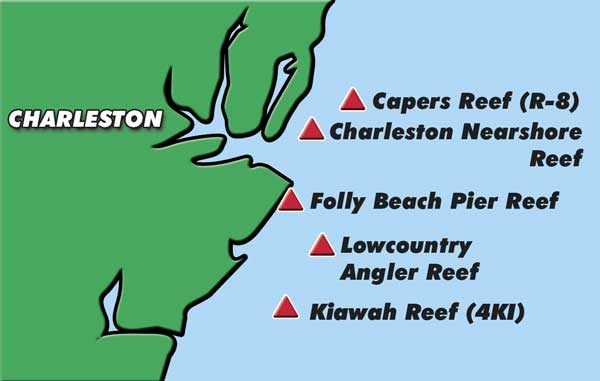
Put a hook in a “convict fish,” and enjoy Charleston’s winter sheepshead fishery.
While Old Man Winter is loosening his grip on the coast this month, it’s still a little too early to go fishing for bass and flounder in the creeks.
Why not make like Wyatt Earp and try to “round-up” as many “convicts” as you can?“Convict-fish,” that is, a common nickname for sheepshead, fish that stack up around jetties and nearshore reefs intending to spawn, providing great opportunities for fishermen willing to take on this cold-weather challenge.
The unmistakable black and white “prison bars” that mark the sheepshead give it the “convict” moniker. And anyone who fishes for them regularly discovers that they are a world-class “bait-stealer,” with an uncanny knack of sucking the bait off of a hook before you can say “Got-cha.” Yes sir, be sure you have lots of bait on deck when fishing for convict-fish, because they’ll rob you blind!
Sheepshead are a member of the porgy family of fishes, which includes the South Atlantic snapper-grouper crowd. The scientific name, Archosargus probatocephalus, literally translates as “the chief porgy with the sheep head.” The chief of thieves might be an even better nickname.
Dee Oliver is a life-long fisherman who acknowledges that sheepshead fishing can be frustrating.
“The fish will steal your bait time after time, and the more you fish for them, the more they will make you say bad words,” said Oliver, who has had his captain’s license for 19 years and likes to fish for sheepshead at the Charleston jetties, keeping him close to places where he loves to fish for giant spot-tails come springtime.
Oliver’s 23-foot Sea Ray is the Plantation Lady, and when he takes her sheepshead fishing, he likes to bring 10 dozen live shrimp and a pint of fiddler crabs per person for bait. If sheepshead are really hungry, this ample bait supply can be stolen in an alarmingly short time, with few fish actually caught.
A similar corollary applies to the hunter who enters a dove field with two boxes of shells, starts shooting liberally, then finds himself out of shells and not yet in possession of a legal limit of 12 birds.
The daily limit of sheeps-head is 20 per person per day, and there is no size limit. It seems that sheepshead are so difficult to catch, they are not targeted as heavily as other saltwater gamefish.
Another way to put it is: sheepshead can provide an overload of frustration for anglers who are possibly out seeking relaxation, or maybe fisherman who thought themselves to be pretty good anglers don’t like having to “eat crow” when the convicts refuse to follow the rules.
However you want to phrase it, sheepshead have stood the test of time, despite their flesh offering excellent table fare.
Oliver, the manager at Haddrell’s Point West tackle shop, has some very specific methods of catching sheeps-head at the jetties. He pairs a 7-foot, fast-action G-Loomis or Fenwick HMG rod with a Shimano Stradic 4000 reel spooled with 12-pound mono. He prefers an Eagle Claw Lazer Sharp 2/0 Kahle-style hook.
When fishing the jetties, he likes to anchor off the transom with an 8-pound Danforth anchor. Then, he tosses a smaller anchor off the bow, into the rocks of the jetty, and pulls the boat forward into position right over the structure. He calls his smaller anchor “disposable” because he may not be able to free it when he’s finished fishing.
He cautions, “While anchored at the jetties, you have to watch out for rogue boat wakes that might try to wash you onto the rocks.” Sometimes, jetty fisherman can pull the smooth move of remaining anchored while running the motor just enough to stay in position until boat wakes dissipate.
Oliver ties his hook to a 20-pound leader, then uses a ¾-ounce lead weight above a barrel swivel to which the leader is tied. He threads on a 6-inch long, 1-inch thick slip-float above the sinker and employs a bead-and-stopper-knot to adjust the depth of the slip-float and rig.
Oliver usually starts with shrimp, not having to worry about smaller, pesky fish like pinfish, which aren’t around during colder weather.
“An average sized sheepshead in March is 5 or 6 pounds, with convicts found in an overall range of three to 12 pounds,” Oliver said.
The state record, caught off the Charleston jetties in Dec. 2001, weighed 15 pounds, 12 ounces.
“Starting in November, sheepshead are moving towards the artificial reefs in order to spawn in March, and they are trying to fatten up along the way,” Oliver said.
Sheepshead also spawn over livebottom, and carrying a mouth filled with molar-like teeth allows them to crush barnacles, crustaceans, fiddler crabs and even small clams.
Oliver passes on some of his best advice on how to catch sheepshead when he says, “You’ve got to set the hook just before they bite.”
Before they bite?
“You have to anticipate the bite,” he said.
Oliver likes to fish when the current is moving, noting that the slack tide is generally not productive for most species. He prefers fishing from two hours after high tide until an hour before low tide. He says not to overlook chumming — crushing some fiddlers into a paste and throwing them overboard, or by knocking some oysters and barnacles off pilings, toting them to your fishing hole and dropping them down into the water.
Capt. Robert Olsen of Knot @ Work charters said that sheepshead can be targeted nine months out of the year around bridge pilings, docks and even oyster rakes. They are seeking structure and often hang along oyster rakes at low tide, where they are frequently spotted by flounder giggers.
“The best time of year to fish for sheepshead is when the water temperature drops into the low 50’s and the sheepshead abandon the inshore estuary for winter sanctuary at the jetties and artificial reefs,” he said.
When anchoring around inshore artificial reefs, Olsen used a regular anchor because his 30-foot Sailfish needs a big hook, but he said that smaller vessels should probably go with a reef anchor, one that is specially made to bend and give when retrieving it from craggy-structure. Use your depth finder to mark structure and try your luck, but don’t stay in any unproductive spot too long, because the fish tend to stack up in certain areas.
Olsen likes to fish with a 6-foot Ugly Stik light-action rod because, he said, “You need a sensitive rod to feel the bite of a sheepshead.”
He uses a Pflueger Medalist spinning reel spooled with anything from 6- to 12-pound Power Pro light braid.
“I like to use a typical fish-finder rig with a ¾-ounce sinker tied to a 1/0 VMC live- bait hook. The VMC hook is a kingfish hook, but they are skinnier than other hooks, and they fit the fiddler the best.”
Olsen’s best advice is, “Remember, you hook sheepshead in the lip, not the mouth.” — another reference to the fact that you had better be ready to set the hook when that fish first approaches your bait.
“Try to keep your rod-tip moving slowly up and down the whole time you are fishing,” he said. “This should give you at least some type of a hint when a sheepshead is near your bait, as you will either feel the line tightening-up or going slack.”
Olsen said that one of the first tournaments on the 2008 fishing calendar is the annual Charleston Inshore Anglers sheepshead tournament, scheduled for April 19.
While fishing around artificial reefs, remember that other fish out there also offer good sport and are good to eat. Fiddlers will catch black sea bass, redfish and black drum, and don’t forget strip baits or mud minnows for catching flounder. A 20-pound flouro-carbon leader should be used to avoid the abrasion that occurs when fishing near an artificial reef.


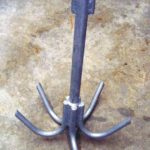
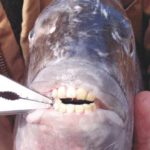
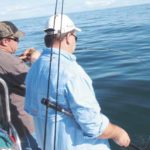

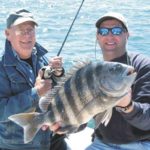
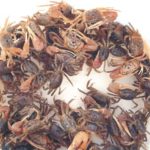


Be the first to comment